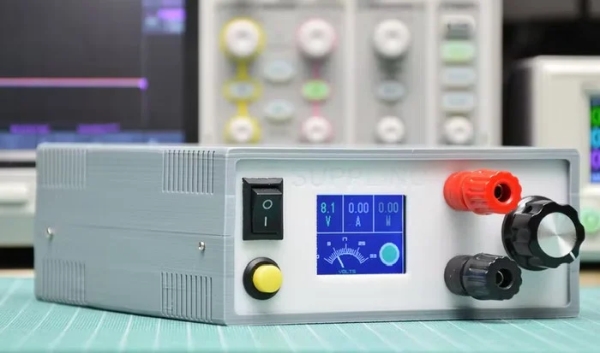If you would like to build your very own benchtop power supply you might be interested in a DIY tutorial for Supplino. A versatile compact Arduino power supply capable of providing from 4 to 40 volts and can output anything from 1.25 to 36 volts, with a maximum of 5A. The DIY benchtop power supply is equipped with a XH-M401 module and a XL4016E1 DC-DC buck converter handles the voltage regulation providing electronic engineers, hobbyists and developers with a stable power supply and a variety of different voltages.

Full instructions on how to create your very own Supplino benchtop power supply complete with an LCD graphical display have been published to the Hackster.io website this week thanks to the Settorezero team of developers and engineers. The project has been classed as an advance build and should take approximately 2 days to complete. The Supplino uses an Arduino Nano R3 and all its electronics are housed in a 3D printed case which is also available via the official product page.
Supplino DIY benchtop power supply
“Supplino is a Quick & Dirty PSU (Power Supply Unit) made with some widely available breakout boards, an Arduino Nano (or an Arduino Nano Every) and a graphical LCD. Power output is given by a DC/DC buck converter based on the XL4016E1 IC with possibility to regulate the output voltage.
Regarding the power input, we prefer feeding it through an external 20÷30V brick PSU such as the ones used for laptops or old printers: this solution is safe and cheap, but you can choose to use a larger enclosure and then include internally your own transformer+diode bridge+capacitors but with a lot of precautions. We used this project to recycle some old printers PSU that have an output voltage of 24V.”
Arduino does not manage the buck converter module but only measures output voltage and current through a current sensor and then shows those values on a display. Power value is showed too. An additional analog gauge can be configured for showing voltage, current or power value giving some retro style to the graphics.
Power output on the banana socket is feed through a relay, so Arduino detaches the output power sensing an external pushbutton or on alarm events (short circuit/under voltage, over-load, over-voltage).
There is a secondary DC/DC buck converter module set to 5V for powering the logics, taking input from the same input of the adjustable module. Eventually you can port also this 5V on the panel (making adjustments to the provided enclosure).”
Source: Arduino R3 DIY benchtop power supply
